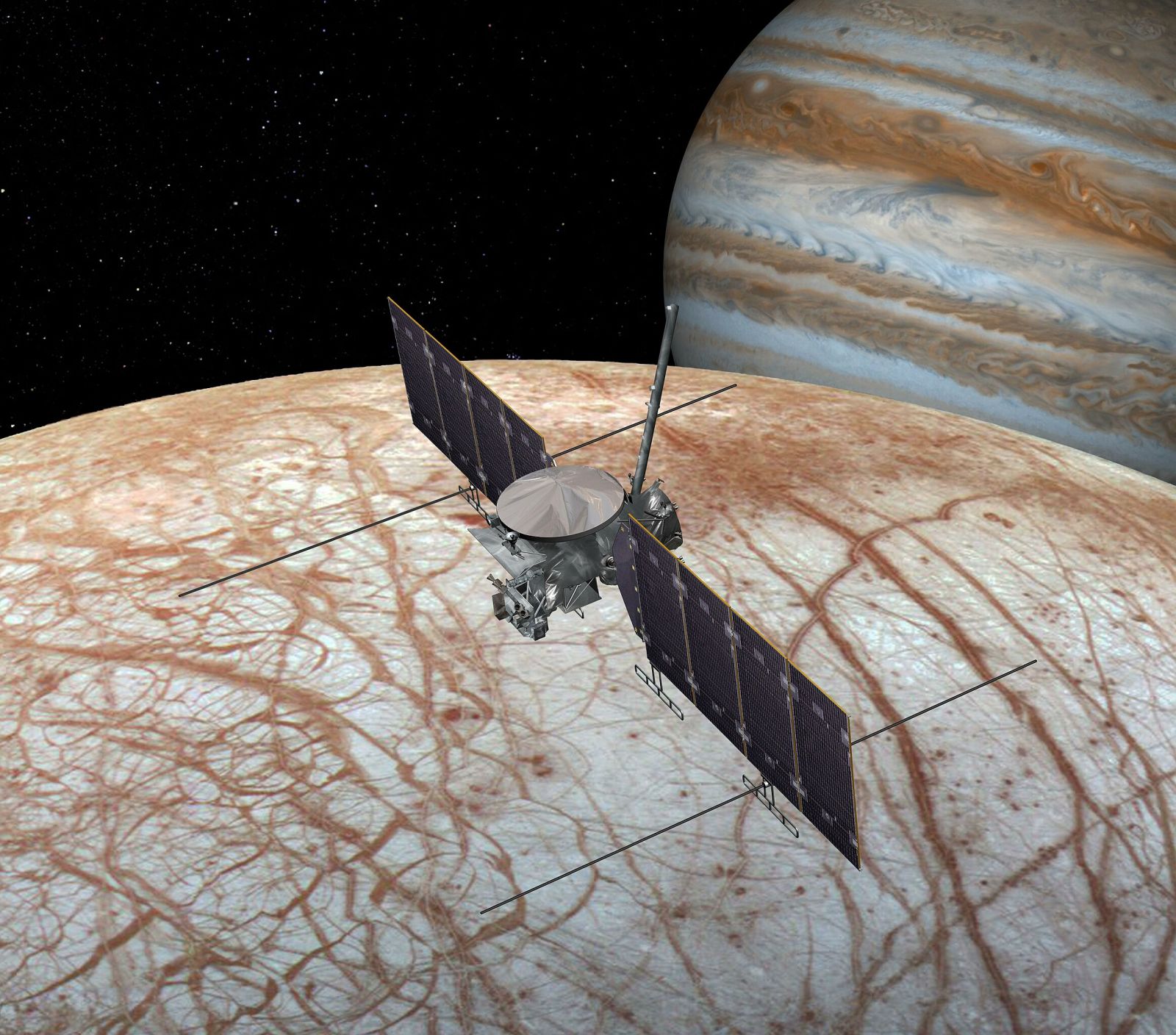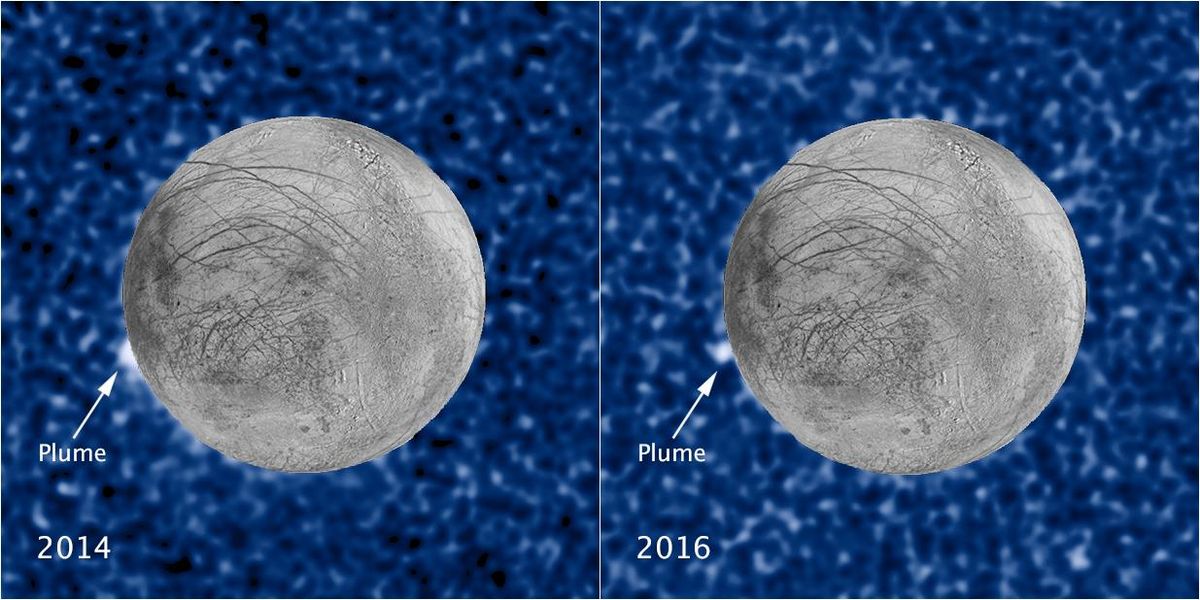A single ice particle to detect extraterrestrial life, and it could happen soon
Follow us on Google News (click on ☆)
A grain of ice from Europa, one of Jupiter's moons, could hold the key to detecting traces of extraterrestrial life. This discovery comes from a recent experiment suggesting that NASA's Europa Clipper probe, equipped with the right instruments, could easily identify signs of life.

This artist's rendering shows the Europa Clipper spacecraft flying over Europa.
Image NASA/JPL-Caltech
Frank Postberg from Freie Universität Berlin, co-author of the study, claims that the Surface Dust Analyzer (SUDA) on the probe could be key to finding life clues in the water and ice geysers ejected into space by this icy moon of Jupiter. Scheduled for launch in October 2024, Europa Clipper will approach Europa at altitudes as low as 16 miles (25 kilometers), aiming to study the habitability of its underground ocean and the thickness of the ice layer covering it.
The Europa Clipper's potential to discover life is inspired by previous findings on Enceladus, another icy natural satellite, this time orbiting Saturn, where water geysers had been observed by the Cassini mission. Similarly, the Hubble Space Telescope captured images of similar plumes rising from the surface of Europa, confirming the presence of comparable geological activity.
Europa Clipper could thus traverse these plumes, capturing ice grains with the SUDA instrument for analysis. To test this possibility, Fabian Klenner's team at the University of Washington in Seattle simulated the high-velocity impact of ice grains on an instrument similar to SUDA in the lab. They used a jet of water vapor loaded with the bacterium Sphingopyxis alaskensis, a terrestrial micro-organism that thrives in conditions similar to those on Europa.

Composite images showing jets of water escaping from Europa, observed by the Hubble Space Telescope in 2014 (left) and 2016.
Credit: NASA/ESA/W. Sparks (STScI)/USGS Astrogeology Science Center
The results of the experiment were promising, indicating that even a tiny portion of cellular material could be detected by a mass spectrometer onboard a space probe. This breakthrough offers new hope for the detection of Earth-like forms of life on oceanic moons such as Europa.
Fabian Klenner's research suggests that instead of looking for traces of DNA, identifying fatty acids and lipids, which make up cell membranes, could be a more reliable method for detecting life. If Europa hosts living organisms possessing such membranes, Europa Clipper could well detect them.